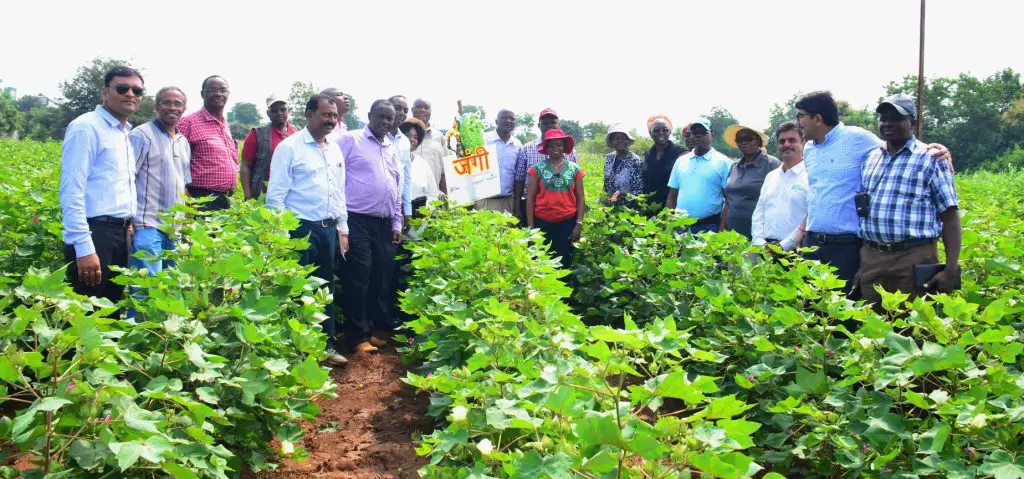In May 2015, Kenya’s parliament approved the disbursement of KShs500 million (USD5 million) to revive textile firm Rift Valley Textile Mills (Rivatex).
The money would be used to purchase equipment for its textile factory giving a new lease of life to the ailing cotton industry.
Rivatex went under due to the liberalisation of the market and its inability to compete with cheaper imports of second-hand clothing commonly known as the mitumba.
Former president Daniel arap Moi officiated at the opening of Rivatex in June 1975 when he was the country’s vice president. Rivatex declared profits in its first three years of operation but mismanagement brought the company to its knees.
Its enviable position and dream of becoming one of the country’s nine major textile mills that would supply fabric and clothing locally and in the region faded.
With this collapse, more than 1,000 employees lost their jobs and farmers who provided about 900 tonnes of cotton to Rivatex lost the market.
Where is the cotton for Rivatex?
On Friday, June 21, President Uhuru Kenyatta commissioned the revamped Rivatex textile factory in Eldoret town oblivious of the challenges staring the company’s success in the eye.
While the commissioning was upbeat, the future still remains uncertain since Kenya is struggling to produce enough cotton even for the few companies that are operating below their capacity.
Cotton farming is an enormous opportunity for farmers but challenges remain with the availability of seeds and fertilisers to produce the crop.
In May 2017, an initiative to revive cotton production noted that Kenya is doing poorly in the sector since the country does not have quality and sufficient inputs.
Poor seeds which are often used produce crops that are susceptible to pests and diseases making it hard for farmers to find the crop a commercially viable option.
In June last year, Kenya began the National Performance Trials (NPT) of genetically modified (GM) cotton. This was done by the Kenya Plant Health Inspectorate Services (KEPHIS) in collaboration with the Kenya Agricultural and Livestock Research Organisation (KALRO).
The first results of the NPT are due this year.
Stakeholders in the texture industry eagerly await the results of the trial which was done after an environmental release approval by the National Bio-safety Authority (NBA) in 2016. It was based on Environmental Impact Assessment clearance certificate and licence for open field trials issued in 2018.
While this progress is a major breakthrough, Kenya lags behind other African countries in the deployment of Bt technology.
As of June last year, only 30,000 farmers were growing cotton on 21,000 hectares. These farmers cumulatively produced 12 tonnes of cotton.
The Agriculture and Food Authority (AFA) says that cotton growing in Kenya can support up to 200,000 farmers cultivating 400,000 hectares.
Despite cotton being in high demand, only 21,000 bales of lint are produced annually against a demand of 140,000.
As a measure to plug the existing shortage of cotton in the country, Kenyatta directed ministries of agriculture, industry, environment, health and education to fast-track the commercialization of genetically modified BT cotton.
He said BT cotton has proven potential for better yields compared to conventional varieties. Kenyatta added that the government will continue to improve policy conditions delivering direct interventions that make inputs, operations and support activities cheaper.
3,000 new jobs for the youth
Modernised at a cost of KShs5 billion, the new Rivatex processing plant is said to create over 3,000 new jobs.
Also, the revival is expected to revitalise the economy of Eldoret town and change the fortunes of thousands of cotton farmers in over 24 counties across the country.
Kenyatta said, “The estimated 3,000 direct jobs that this project will generate and the tens of thousands of indirect jobs created in support and ancillary activities will go a long way in boosting not just this region but also our national quest for value addition.”
To incentivise Rivatex into profitability, the president announced that the government will increase the power supply to the plant from 33 KVA to 66 KVA to enable the textile factory to operate on a 24-hour basis.
He further directed the ministry of energy to cut down the price of electricity sold to the factory by 50 per cent.
Kenyatta said the revival of Rivatex rekindles hopes and revives dreams of many Kenyans by ushering in a new dawn for cotton farmers.
While challenging the management of Rivatex to ensure that cotton farmers and ginners are assured of a ready market and guaranteed stable prices for their crop, the President called on county governments to play their role by supporting farmers at the local level.
“Rivatex alone assures our farmers at least 100,000 bales of lint per year. With estimated consumption of other textiles mills, we project a demand of over 140,000 Bales of lint per annum, not including export possibilities,” the President said.
Made in Kenya Fridays Initiative
In line with the, ‘Buy Kenya Build Kenya’ policy, the President announced that the government will continue supporting local manufacturers by buying from them.
“Rivatex is already making fabrics for our uniformed forces, schools, hospitals and supplying to the general public. They supply popular clothing such as kitenges and khangas,” he said.
Kenyatta challenged public sector employees to make it a habit of wearing locally made clothing to work at least once a week.
He encouraged all Kenyans, especially the youth, to embrace locally made wear in support of the growing textile sector in the country.
“I encourage the private sector to join the government in this “Made in Kenya Fridays Initiative” so that we may showcase what our local apparel Industry has to offer,” Kenyatta said.
The President also launched the Moi University laptop assembly line saying the facility was a great case study and success story in academia and industry linkage.
He said the assembly will go a long way in addressing the skills and capacity gaps in the ICT manufacturing sector in the country.
